Storms, wildfires, and infrastructure have become common causes of outages for millions of US homeowners. Whether you're worried about the spoiled food in the fridge, disrupted work, or losing communication with loved ones, the need for an essential home backup power is real and urgent. That's why Jackery has launched the next-gen Jackery HomePower 3000 to give homeowners complete peace of mind during sudden outages.
The Jackery HomePower 3000 features a highly efficient LiFePO4 battery and is built with ChargeShield 2.0 battery and appliance protection mechanism. It's the lightest and smallest 3kWh LFP with CTB technology to save 14% of space. This comprehensive guide will reveal everything you need to know about the Jackery Solar Generator HomePower 3000 and why it's an essential backup for modern homes.
Jackery HomePower 3000: Essential Home Backup Power
The Jackery Solar Generator HomePower 3000 is an essential home backup power solution designed to keep critical household appliances running smoothly during outages or blackouts. It has a LiFePO4 battery capacity of 3072Wh and a 3600W inverter that can handle 7200W of surge power.
With this robust essential home backup solution, the Jackery HomePower 3000 can power a fridge (200W), fan (30W), WiFi router (7W), and light (60W) for approximately 15 hours, easily covering the average US outage duration of 5-6 hours. It can also connect to the home grid to auto switch (in less than 20ms) to back up during outages.

What are the Basic Functions of Jackery HomePower 3000?
What are the Types & Functions of Buttons on the HomePower 3000?

Power Button

DC/USB Button
The second button is the DC/USB button. Pressing this enables the DC port (cigarette lighter socket) located at the top left of the Jackery HomePower 3000, as well as the four USB-A/USB-C ports on the left side.

AC Button

What are the Different Types of Connection Ports?
Output (Power Supply) Ports





Input (Charging) Port



How to Read the Screen on the Front of the Power Station?

|
Icon |
Name |
Description |
|
1 |
WiFi |
On: WiFi connected. Blinking: Ready to connect to WiFi. Off: WiFi disconnected. |
|
2 |
Bluetooth |
On: Bluetooth connected. Blinking: Ready to connect to Bluetooth. Off: Bluetooth disconnected. |
|
3 |
Quiet Charging Mode (can be enabled / disabled in the Jackery APP) |
On: The noise during charging is significantly minimized, while the charging power is reduced and the charging speed slows down. Off: Quiet Charging Mode is disabled. |
|
4 |
Battery Saving Mode (can be enabled / disabled in the Jackery APP) |
On: Limits the usable battery capacity to extend battery life. Off: Battery Saving Mode is disabled. |
|
Self-powered Mode (can be enabled / disabled in the Jackery APP) |
On: Maximizes the use of solar energy and reduces reliance on grid electricity by prioritizing renewable energy sources for charging and powering loads. (The power station must be connected to a solar panel and grid simultaneously) Off: Self-powered Mode is disabled. |
|
|
5 |
Charging Plan (can be set in the Jackery APP) |
Customize the charging time of the Jackery HomePower 3000. Suitable for situations with fluctuating and peak electricity prices, it allows for charging plans based on electricity prices, ensuring efficient charging during low-electricity costs. |
|
6 |
AC Power Indicator |
The AC output (pure sine wave) is on. |
|
7 |
Input Power |
Displays the input power in watts. |
|
8 |
Remaining Charge Time |
Displays the remaining charging time. |
|
9 |
AC Wall Charging Indicator |
The product is charged via the AC input using grid power. |
|
10 |
Car Charging Indicator |
The product is charged via the DC input (8020) using DC12V (car charging). |
|
11 |
Solar Charging Indicator |
The product is charged via the DC input (8020) using solar panel(s). |
|
12 |
Battery Power Indicator |
When the product is being charged, the orange circle around the battery percentage will light up in sequence. When charging other devices, the orange circle will stay on. |
|
13 |
Low Battery Indicator |
On: The battery level is below 20%. Blinking: The battery level is below 5%. Off: The product is charging. |
|
14 |
Remaining Battery Percentage |
Displays the remaining battery percentage. |
|
15 |
Fault code |
A product error has occurred. Please refer to the Troubleshooting section for details. |
|
16 |
High temperature Indicator |
High temperature protection is triggered. The product may stop functioning until its temperature returns to the normal operating range. |
|
Low temperature Indicator |
Low temperature protection is triggered. The product may stop functioning until its temperature returns to the normal operating range. |
|
|
17 |
Energy Saving Mode |
To prevent unnecessary battery consumption from forgetting to turn off the output, the product enables Energy Saving Mode by default. If no device is connected or the connected device’s power consumption is below a certain threshold (AC output≤25W; USB output≤2W; Car output≤2W), the device will automatically turn off all outputs after 12 hours. On/Off: Press and hold both the AC Power Button and Main Power Button. |
|
18 |
Output Power |
Displays the output power in watts. |
|
19 |
Remaining Discharge Time |
Displays the remaining discharging time. |
The front display of the Jackery HomePower 3000 gives you real-time information, including:
- Remaining battery level
- Input power (charging) and estimated charging time
- Output power (supply) and estimated runtime
- Status icons for AC, solar panel, or car input
- WiFi and Bluetooth connection status
- Error messages and high/low temperature warnings
- Operation or charging mode (can be switched in the app)
With the help of the display screen on the Jackery HomePower 3000, you can check the basic status of the power station, charging time, and remaining runtime. If something goes wrong, an error code will appear on the display screen so you know what action to take.
How to Use the Jackery HomePower 3000 and Power Devices?
The Jackery HomePower 3000 can power almost all core indoor or outdoor appliances. In this section, we will guide you through the steps to connect and power your appliances with the help of the Jackery HomePower 3000.
How to Power Appliances from an AC Outlet?
If you want to run an appliance from the AC outlets, make sure the main power is on and press the AC button. Once the button lights up green, the AC ports are active and ready for use.




How to Power Appliances from USB Output (Type-A/Type-C)?



How to Power Appliances from DC Output (Cigarette Lighter Socket)?



How to Charge the Jackery HomePower 3000 via AC Outlet, Solar Panel, and Cigarette Lighter Socket?
Note: If you buy the Jackery Solar Generator bundle, you will get all the compatible cables and connectors required for connecting the solar panels to the portable power station.
Let's explain the step-by-step process below:
How to Use AC Charging (Outlet Charging)?
If you want to charge the Jackery HomePower 3000 from an AC outlet at home, you can use the AC charging cable included in the bundle.

Here are the steps to follow:
Step 1: Plug the output terminal or outlet of the cable into a wall outlet at home (or any standard AC outlet available in outdoor locations).



How to Charge Using Solar Panels?
When charging the Jackery HomePower 3000 with solar panels, make sure to use the dedicated solar charging cable that comes with your solar panel bundle.

Step 1: Unfold the compatible Jackery SolarSaga Solar Panels outdoors, where they receive direct sunlight.

The built-in kickstand on the back allows you to easily adjust the solar panel angle. For optimal results, position the panel so that it faces the sun at approximately a 90-degree angle.

Step 2: Remove the silicone cover on the top right corner of the panel’s back side. Connect the charging cable to the output port.

Step 3: Plug the other end of the cable into the DC input port of the power station.

You need to remove the conversion plug at the end of the adapter (DC8020) before connecting. If the plug is left attached, it becomes DC7090, which is not compatible with the Jackery HomePower 3000 and will prevent charging.

Step 4: Once properly connected, the screen will display the INPUT value, and charging will begin.

If you are using two solar panels, you can plug each one directly into the two DC input ports. The Jackery HomePower 3000 supports up to four solar panels. However, you can only connect one, two, or four panels and not three.
In order to connect four panels, you’ll need two Jackery Solar Panel Connectors (sold separately). Each adapter allows you to connect two panels together before plugging into the power station.
Note: Make sure all connected solar panels are the same model and have the same output. Mixing different wattages, such as 100W and 200W, may cause malfunctions and is not supported.
How to Charge While Driving Using a Car Cigarette Lighter Socket?
You can also recharge the Jackery HomePower 3000 from your vehicle’s cigarette lighter socket. For this, you will need a separately sold cigarette lighter or car charging cable.

Step 1: Start by inserting the car charging cable into your car’s cigarette lighter socket. One thing to remember is that the location of the socket varies depending on the car model, so refer to your vehicle’s manual if necessary.

Step 2: Next, connect the DC8020 terminal on the other end of the cable into the DC input port on the portable power station.

Step 3: Once connected, the INPUT number will appear on the display, indicating that the portable power station is charging from your car.

Note: This method is especially handy on road trips, camping, or while sleeping in your car. However, charging through the cigarette lighter draws power from the car battery and can quickly drain it. To prevent draining your battery completely, ensure that you run your car engine every few hours to charge the battery.
How to Use the Power Station Trolley with the Jackery HomePower 3000?
The Jackery Power Station Trolley is a lightweight and durable trolley that weighs only 11 lbs. It is strong enough to handle heavy loads and light enough for easy transportation. It features a built-in brake system that maintains the trolley's stability when parked. This section explains how to set up and use the power station trolley designed for the Jackery HomePower 3000.
Note: Before you start, please ensure you have a Phillips-head screwdriver to attach the wheels to the trolley.
Preparation: How to Place the Portable Power Station?
You will receive the power station trolley in its folded state.

Step 1: Raise the stand to unfold the frame of the power station trolley.

Step 2: Flip the trolley over and attach both the included wheels.

You need to use the screwdriver to secure the wheels firmly in place.

Step 3: Once both wheels are attached, you can lift the power station trolley upright.

Step 4: Place the portable power station onto the trolley, and it’s ready to use.

The trolley’s handle can be adjusted to three different lengths. Just press the button on top of the rear stand and pull to extend. To shorten the handle, press the same button and push it back in.

The large wheels of the trolley can be easily locked by lowering the lever. It is handy when parking the trolley on a slope or uneven surface.

How to Use the Included Rubber Belt?
The Jackery Power Station Trolley comes with an elastic rubber belt to help secure the power station in place during transport. You can wrap the belt around the thin rod at the bottom of the stand and attach it to the trolley frame.

Since the belt is stretchable, you can connect it to the lower or upper tier of the stand as needed.

Once you secure the portable power station with the rubber belt, you can safely move it across rough terrain or sloped surfaces without worrying about it slipping or falling.
How to Fold the Power Station Trolley When Not in Use?
When you are done using the Jackery Power Station Trolley, it can be folded down quickly for easy storage.
Simply pull the lever located at the bottom of the back stand while pressing down on the top of the stand. The trolley collapses neatly into a compact size.

The slim folded form of the Jackery Power Station Trolley makes it convenient to tuck away in a closet or store in your car for transport.

What are Some Precautions to Take While Using the Jackery HomePower 3000?
In order to ensure the safe and reliable use of the Jackery HomePower 3000, you should not exceed its rated output capacity. Make sure to always use and store the power station within the recommended temperature ranges. You must keep the portable power station and solar panel terminals dry at all times. Let’s go through each precaution in detail.
Do Not Use Beyond the Rated Output
The Jackery HomePower 3000 delivers a rated output of 3,600W. You should connect appliances or devices that consume less than 3,600W. This is because connecting over 3,600W may trigger the built-in safety system, which will automatically cut off power.
For example, this combination would exceed the limit:
- Microwave Oven: 1,500W
- Electric Kettle: 1,000W
- Rice Cooker: 900W
- Refrigerator: 300W
Total: 3,700W (Over limit!)
You should always check the wattage of your appliances and make sure the total does not exceed the rated output range of 3,600W.
Do Not Use or Store Outside the Charging, Operating, or Storage Temperature Range
For safe charging, operation, and storage, you must follow the temperature guidelines below:
|
|
Temperature Range |
|
Ambient Temperature |
0°C~45°C (32°F~113°F) |
|
Discharge Temperature |
-15°C~45°C (5°F~113°F) |
|
Storage Temperature (1 Year) |
0°C~25°C (32°F~77°F) |
Using or storing the battery outside of these ranges can cause performance issues or even damage the battery.
Note: The Jackery HomePower 3000 can operate in low-temperature environments ranging from -15°C to -10°C (5°F to 14°F) with a maximum output power of 2,000W under these conditions.
Do Not Get the Portable Power Station Wet
The Jackery HomePower 3000 itself is not waterproof, so it is recommended to avoid using the portable power station in the rain or allowing water to come into contact with it.
Do Not Get the Terminals of the Solar Panel Wet
Jackery Solar Panels are not entirely waterproof, especially the output terminal on the back (top right). You should always avoid letting water get into the terminal area. Even though the silicone cover provides some protection, it is not fully waterproof. In rainy weather, you should move the solar panel to a dry location or cover the terminals with a plastic sheet to prevent water intrusion.

Do Not Put More than 176.37 lbs (80 kg) on the Trolley
The folding Jackery Power Station Trolley is designed to safely hold up to 80 kg or 176.37 lbs. If you load the trolley with more than this recommended weight, it may cause damage or breakage.
When you follow all the precautions, it will help keep your Jackery HomePower 3000 in good condition and ensure safe usage at home, outdoors, or on the go.
Excellent Features of Jackery HomePower 3000
The Jackery HomePower 3000 is built for convenience, safety, and peace of mind during unexpected blackouts or outages. Let's check out how each feature of Jackery HomePower 3000 makes it a reliable choice:
Plug and Play Design
The Jackery HomePower 3000 is easy to use and has a plug-and-play design. The intelligent display with 19 modes lets anyone in the family control the devices being powered with the essential home backup power solution. All you need to do is set it up beforehand by plugging the devices into the essential home backup solution during the outages and clicking Power On > AC/DC.
World's Smallest and Lightest 3kWh LFP
The Jackery HomePower 3000 is 47% smaller and 43% lighter than other mainstream 3kWh products of similar capacity. Its CTB technology and honeycomb-style bottom enhance space efficiency, durability, and stability. According to the Global Off-Grid Power Station Equipment Independent Industry Report by Frost & Sullivan, it's the world's lightest and smallest 3kWh solar generator, making it easy to carry anywhere and power essential appliances.

ZeroDrain Technology for Long-Term Readiness
The Jackery HomePower 3000 is designed with ZeroDrain technology to retain 95% of its charge after 365 days of inactivity. This means you can store the Jackery HomePower 3000 and still count on it when a storm, wildfire, or blackout hits — even if they haven't touched it for months. With an ultra-low self-consumption of only 7μA after a year of full charge, the essential home backup power ensures you don't have to do monthly check-ins. Just make sure to keep the power off before storing the power station.
5 Ways to Recharge
The Jackery HomePower 3000 can be recharged in five different ways, so you never have to worry about powering appliances during outages. For example, the hybrid charging with solar panels and an AC power outlet can fully charge the Jackery HomePower 3000 in just 1.7 hours, ensuring the power station is ready to run essential appliances anytime you need it. If you don't have electricity or sunlight, you can consider charging the power station with a gas generator (120V/1800W) in as fast as 2.2 hours to enjoy 1 day of peace and clean energy.
|
Recharging Methods |
Jackery HomePower 3000 |
|
Wall Outlet |
2.2H |
|
Hybrid Charging |
1.7H |
|
Gas Generator |
2.2H |
|
Solar Panels |
3.5H (Fastest Solar Charging) |
|
Car Charger |
Car charger ensures emergency power needs are met, providing uninterrupted energy while on the move. |
20ms UPS Keeps Power Flowing
The Jackery HomePower 3000 features UL-certified UPS support. It switches to backup power in less than 20ms during outages, ensuring uninterrupted operation of critical devices. You just need to connect the essential home backup power solution to the home grid to keep critical appliances, such as security cameras, automatic pet feeders, computers, and medical refrigerators, running smoothly.
Save Up to 25% on Electricity Bills
Off-peak charging and prioritized solar charging are two smart features in the Jackery Solar Generator HomePower 3000 that can help you save around 25% on electricity bills. The Jackery App lets you schedule recharging times during off-peak hours when the electricity rate is low. Use off-peak charging and solar prioritization to reduce utility bills by up to 25% while reducing your carbon footprint.
AI-Powered Safe Charging
The Jackery HomePower 3000 is built with ChargeShield 2.0 technology and enhanced safety features to provide comprehensive safety for every use. The smart AI-based charging technology adjusts the charging speeds to optimize the balance between fast and slow charging to protect the battery's health. The essential home backup power can withstand sudden grid fluctuations and extreme thunderstorms.

Whisper Quiet Operation
The Jackery HomePower 3000 operates at as low as 27 dB, which is less than a quiet library. The solar generator does not emit any toxic fumes, making it safe for the environment. The Jackery HomePower 3000 can be used indoors because it is noiseless and fumes-free, making it ideal for powering essential appliances in harsh environments, such as hurricanes, heavy rain, and heat waves.
Up to 3500 kWh of Free Energy Generated
The Jackery HomePower 3000, when paired with two Jackery SolarSaga 200W Bifacial Solar Panels, can generate up to 3500 kWh of free solar energy over five years. Thanks to industry-leading IBC technology and 80% bifacial efficiency, the solar panels capture sunlight from both sides to maximize output.
In optimal conditions, like in the western US, they can produce up to 3546 kWh annually, while the eastern regions can still yield around 2920 kWh per year. Designed for durability, the foldable panels withstand up to 4,000 folds, making them easy to carry.
Disclaimer: The above results are based on Jackery Lab calculations. Actual values may vary depending on real-world conditions.
Comparing the Jackery HomePower 3000 and Jackery 3000 Pro
While the Jackery HomePower 3000 and Jackery 3000 Pro offer 3kWh capacity, the Jackery HomePower 3000 is built for essential home backup use. It has versatile port options, including Dual PD100W, TT-30 RV Port, and AC outlets to power any type of appliance. It also has home-specific enhancements such as scheduled charging and long-duration storage (ZeroDrain). Let's compare the Jackery HomePower 3000 vs the Jackery 3000 Pro below:
|
Comparison |
Jackery HomePower 3000 |
Jackery 3000 Pro |
|
Top Bundle |
Explorer HomePower 3000 and 2*SolarSaga 200W Solar Panels |
Explorer 3000 Pro and SolarSaga 500X Solar Panels |
|
Position |
Essential Home Backup Power |
Off-grid Travel and Power Outages |
|
Capacity |
3072Wh |
3024Wh |
|
Capacity Expandable |
No |
No |
|
Output Power (Rated/Surge) |
3600W/7200W |
3000W/6000W |
|
Output |
3600W |
3000W |
|
Cell Type |
LiFePO4 |
NMC |
|
Recharge Type |
Fastest Solar Recharging: 3.5H Wall Recharging: 2.2H Car Recharging: Car charger ensures emergency power needs are met, providing uninterrupted energy while on the move. Gas Generator (120V, 1800W): 2.2H Hybrid Charging: 1.7H |
Solar Recharging: 3.5H (6*SolarSaga 200W Solar Panels) Wall Recharging: 2.4H Car Recharging: 35H |
|
Home Power Management |
Yes |
No |
|
Weight |
59.52 lbs (27 kg) |
63.93 lbs (29 kg) |
|
Portability |
Two side handles for easy grip |
Foldable handle, pull rod, and double wheels |
|
Size (L×W×H) |
16.4 × 12.8 × 12 in / 41.6 × 32.5 × 30.5 cm |
18.6 x 14.1 x 14.7 in / 47.3 x 35.94 x 37.36 cm |
|
AC Output |
(4x) 120V~ 60Hz, 20A Max, 2400W (1x) 120V~ 60Hz, 30A Max, 3600W |
(4x) 120V~ 60Hz, 20A Max (1x) 120V~ 60Hz, 25A Max |
|
USB-A Output |
(2x) 18W Max, 5-6V⎓3A, 6-9V⎓2A, 9-12V⎓1.5A |
(2x) Quick Charge 3.0, 18W Max, 5-6V⎓3A, 6-9V⎓2A, 9-12V⎓1.5A |
|
USB-C Output |
(2x) 100W Max, 5V⎓3A, 9V⎓3A, 12V⎓3A, 15V⎓3A, 20V⎓5A |
(2x) 100W Max, 5V⎓3A, 9V⎓3A, 12V⎓3A, 15V⎓3A, 20V⎓5A |
|
Car Port |
12V⎓10A Max |
12V⎓10A Max |
|
DC Input |
(2x) DC 8mm Ports: 12-16V (Working Voltage)⎓8A Max, Double to 8A Max;
16-60V (Working Voltage)⎓12A Max, Double to 24A/1000W Max |
(2x) DC 8mm Ports: 11-17.5V (Working Voltage)⎓8A Max, Double to 8A Max; 17.5-60V (Working Voltage)⎓12A Max, Double to 24A/1400W Max |
|
AC Input |
100V-120V~ 60Hz, 15A Max |
120V~ 60Hz, 15A Max |
|
Manage System |
Innovative ChargeShield 2.0 technology |
BMS, Over Voltage Protection, Short Circuit Protection |
|
Recharge Lifecycle |
4000 cycles to 70%+ capacity |
2000 cycles to 70%+ capacity |
|
Display Screen |
Yes |
Yes |
|
App Control |
Yes |
Yes |
|
Operating Temperature |
Charge Temperature: 32~113 °F (0~45°C) Discharge Temperature: 5~113°F (-15~45°C) 5~14°F (-15~ -10°C) |
Charge Temperature: 32~104 °F (0~40°C) Discharge Temperature: -4~105°F (-20~40°C) |
|
Quiet Level |
Less than 27 dB Maximum (Less than a whisper) |
Less than 30 dB Maximum (Less than a whisper) |
|
Durable Level |
Ultra-durable and high-quality design |
Portable suitcase design |
|
Warranty |
3+2 Years (the two-year extra warranty is applied automatically when you purchase it from the official website) |
3+2 Years (the two-year extra warranty is applied automatically when you purchase it from the official website) |
|
Shipping |
Free shipping costs on every Jackery order. Fast Shipping: 3 - 4 business days FedEx shipping service for: CA/AL/GA/LA/MA/MO/NC/SC/NC/VA/AR/IL/KS/OK/TX. |
|
|
Solar Bundle |
HomePower 3000 + SolarSaga 200W x 2 HomePower 3000 + SolarSaga 500 X HomePower 3000 + HomePower 3000 + SolarSaga 200W x 2 |
Explorer 3000 Pro + SolarSaga 200W x 2 Explorer 3000 Pro + SolarSaga 200W x 4 Explorer 3000 Pro + SolarSaga 500 X |
Frequently Asked Questions About Jackery HomePower 3000
I connected the device cable to the AC output or USB output port, but it doesn't work. What's the reason?
The most common reason is that the main power button or the AC/USB output button is not turned on. You need to check and make sure that the buttons are lit green.

If the power is already on, the issue may be a loose connection or cable. You can also try unplugging and reconnecting the cable for a secure connection. If it still doesn’t work, you can contact Jackery's customer support team.
I connected the solar panel, but the portable power supply is not charging. What is the reason?
If the Jackery HomePower 3000 is not charging even after connecting the solar panels, the common reasons could be insufficient sunlight, shaded panels, or incorrect adapter terminals. Let's explain them briefly:
Insufficient Sunlight: If the foldable solar panels are not getting enough sunlight, the portable power station won't charge. You can consider adjusting the solar panel so it faces the sun at a 90° angle.
Panel Partially Shaded: Even a small shadow on the solar panel can reduce its efficiency. Make sure the entire solar panel is exposed to sunlight and free from dust and dirt.
Incorrect Adapter Terminal: The charging cable should be used with the end plug removed (DC8020). If the conversion plug (DC7909) is attached, the power station will not charge.

Where can I purchase a cigarette lighter charging cable?
Jackery’s official car cigarette lighter charging cable is available on our official website as well as popular online retailers such as Amazon. When choosing a cable, make sure it has both a cigarette lighter terminal and a DC8020 male connector.
Who should I contact if there is a malfunction or problem?
If you experience any trouble, please reach out to our customer support team via call and SMS on 1-888-502-2236 (Mon-Fri, 9AM-5PM PST) or email us at hello@jackery.com.
Can other companies' solar panels be connected to the Jackery HomePower 3000?
No, we do not recommend using other companies’ solar panels with the Jackery HomePower 3000 because current differences may cause malfunctions.
Does the Jackery HomePower 3000 have a battery expansion function?
No, the Jackery HomePower 3000 is not expandable. If you need an expandable home battery backup, you can consider other models, such as the Jackery Solar Generator 1000 Plus (expandable up to 5 kWh), the Jackery Solar Generator 2000 Plus (expandable up to 24 kWh), and the Jackery Solar Generator 5000 Plus (expandable up to 60 kWh). If you want to learn how big these expandable Jackery models can get, please refer to our detailed guide: How Big Can Jackery Plus Get? Expandable Power and Capacity Breakdown.
Do you sell a solar panel extension cable that can be used with the Jackery HomePower 3000? Also, can I use extension cables from other companies?
Yes, you can purchase the Jackery DC Extension Cable for Solar Panel. It is a 16.4-foot power cable that extends the connection between the Jackery HomePower 3000 and the solar panel. With this extension cable, you can keep the portable power station indoors and place solar panels outside for maximum sun exposure. For safe operation, we do not recommend using third-party extension cables.

Conclusion
The Jackery HomePower 3000 is a full-fledged essential home backup power solution that can keep appliances running during outages caused by hurricanes, wildfires, and infrastructure failures. Its massive battery capacity, whisper-quiet operation, and intelligent app-based control ensure complete peace of mind when the grid fails to supply electricity. If you're looking for an essential home backup solution for unexpected outages or blackouts, consider investing in the Jackery HomePower 3000.

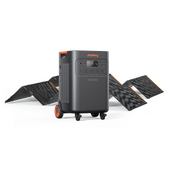
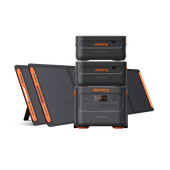
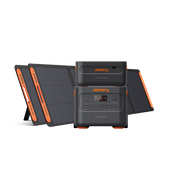
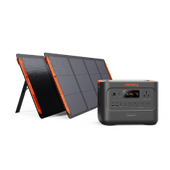

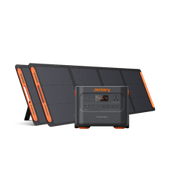
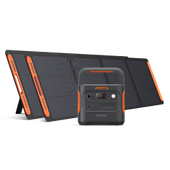

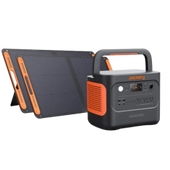

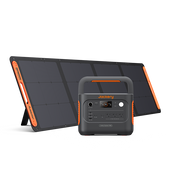
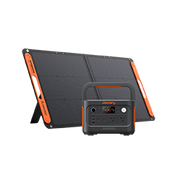

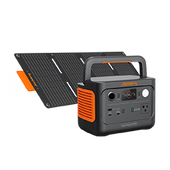
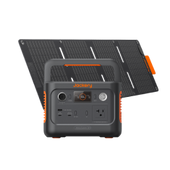
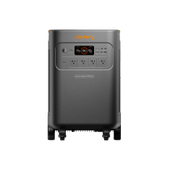
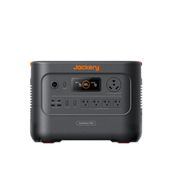
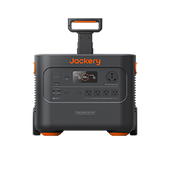
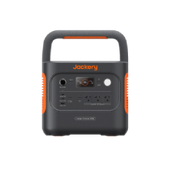
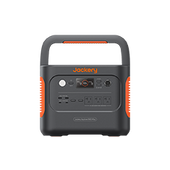
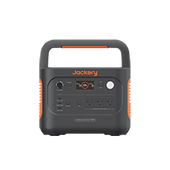
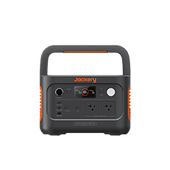
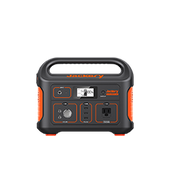
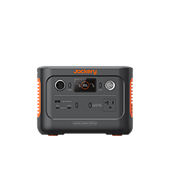

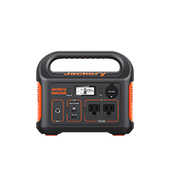
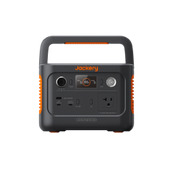
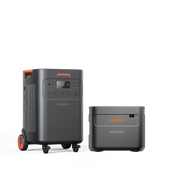
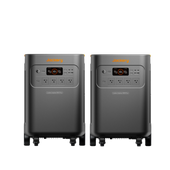
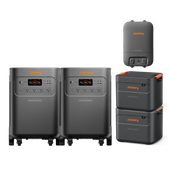
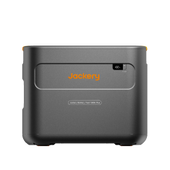
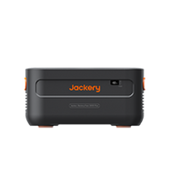
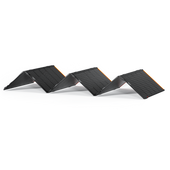

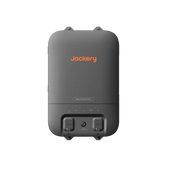
![[Add - on] Jackery Manual Transfer Switch for Explorer 5000 Plus - Jackery](http://www.jackery.com/cdn/shop/files/add-on-jackery-manual-transfer-switch-for-explorer-5000-plus-9017324.png?v=1754016782&width=170)
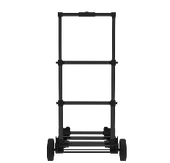
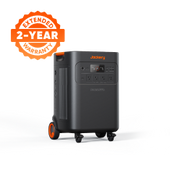
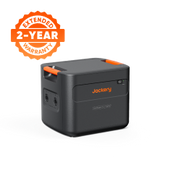
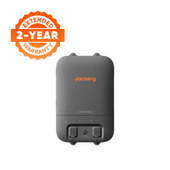
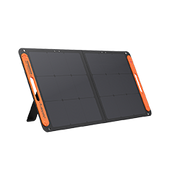
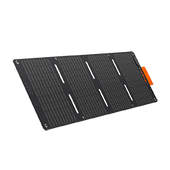
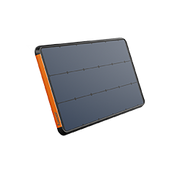
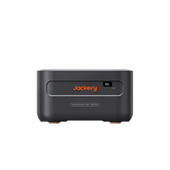

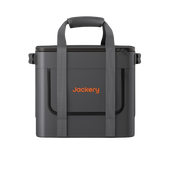
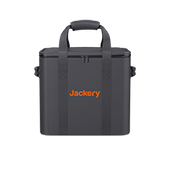
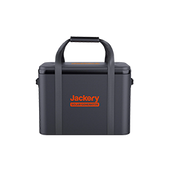
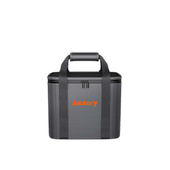
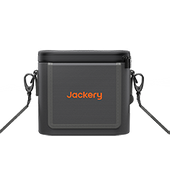
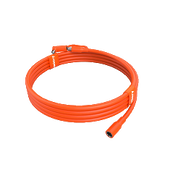
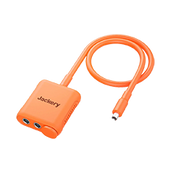
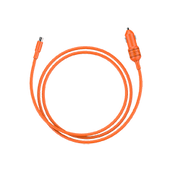

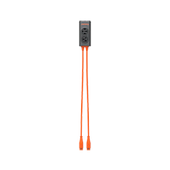
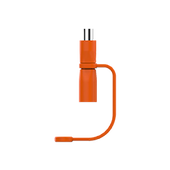
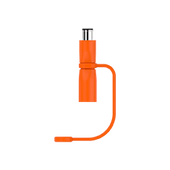
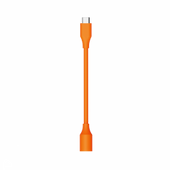
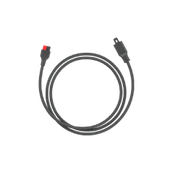
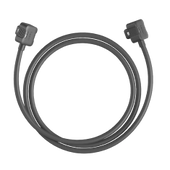
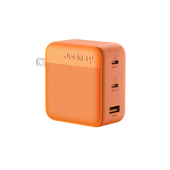



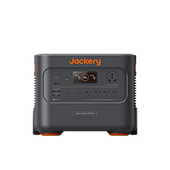
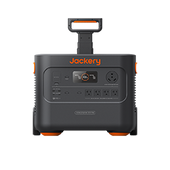
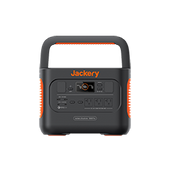
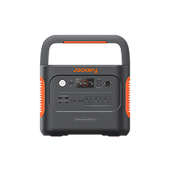

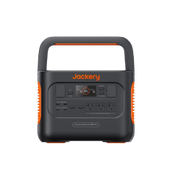
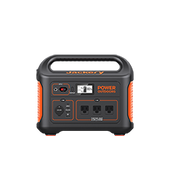


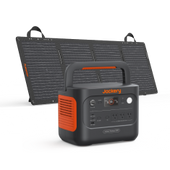

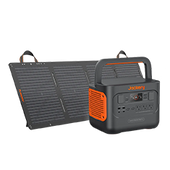

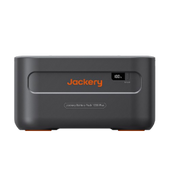



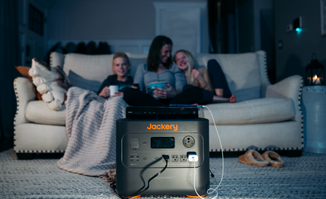
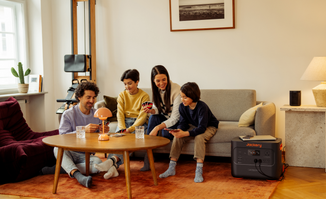

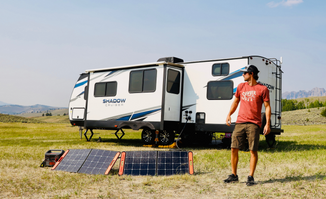

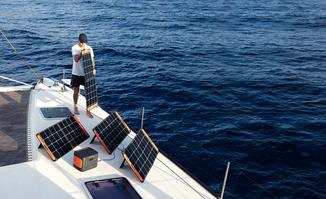

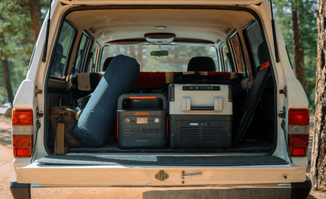




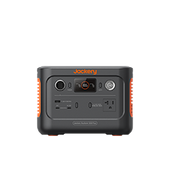

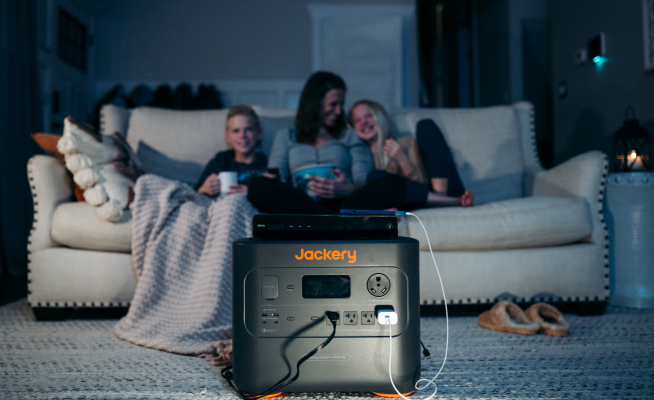

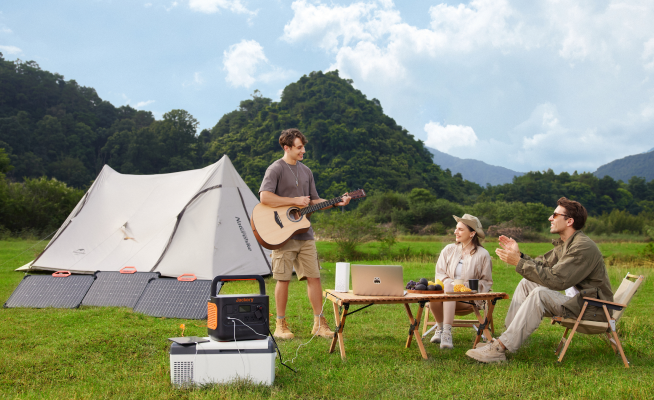
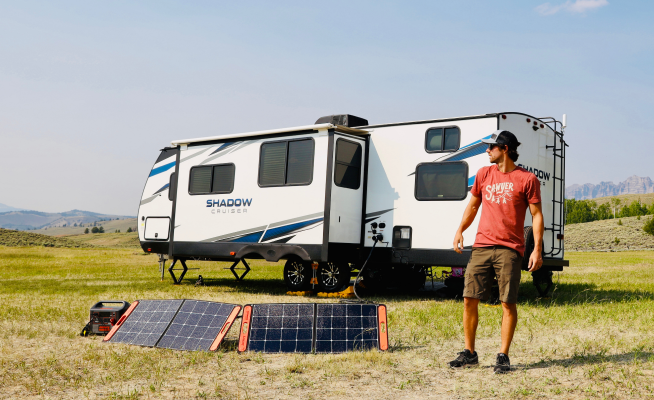

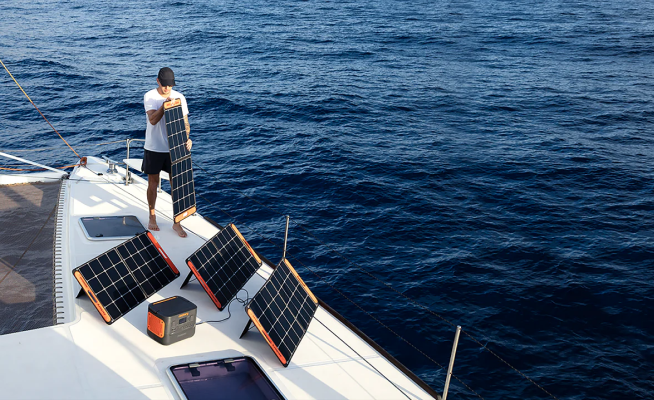
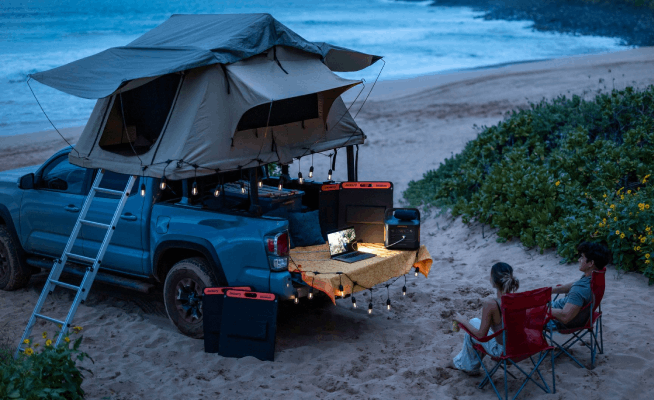
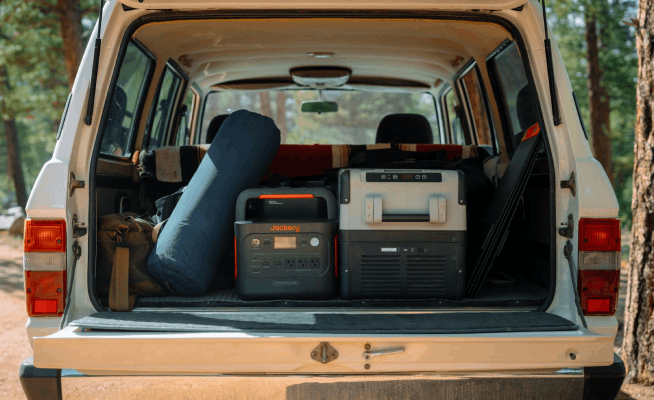














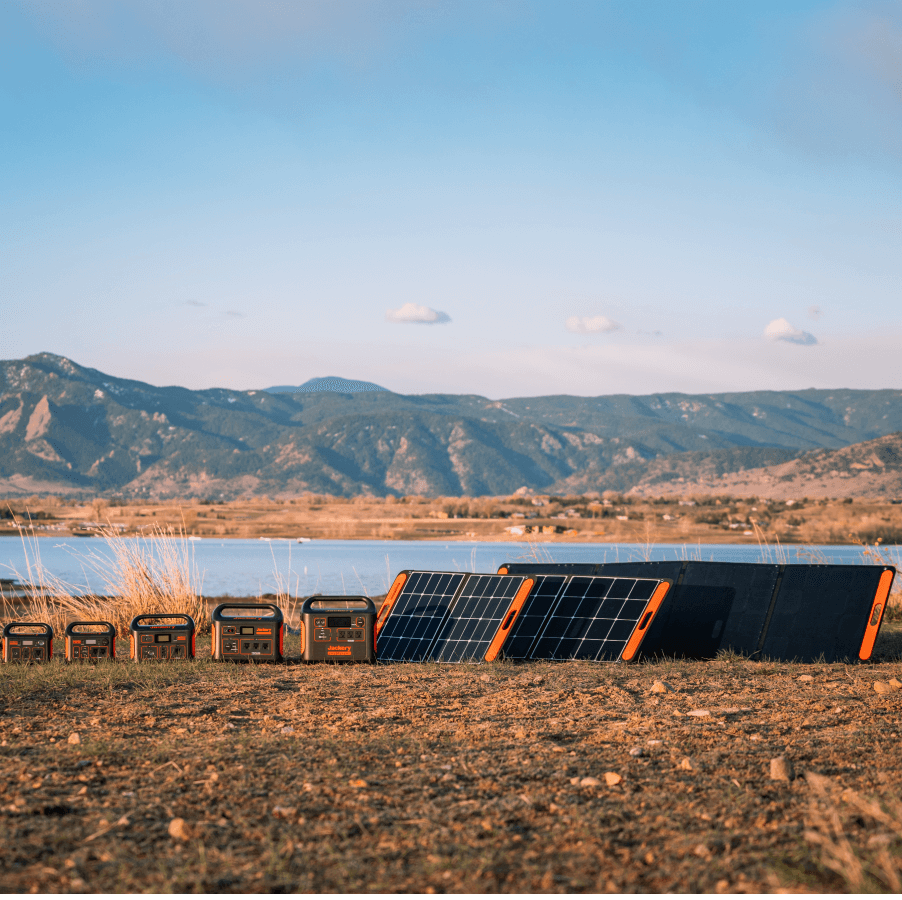


Was on the fence about 2000 Plus + electric battery + 500-W x. August 15 New HomePower 3000 + SolarSaga 500-W X + P.S. Trolley + Anderson Cable, FL Tax 7% to my delight, 2,484.54 Total.
Leave a comment